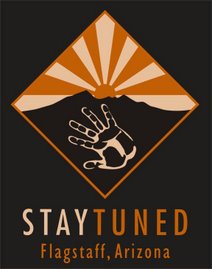 Keeping Peter Gilmore's spinal engine running.
Keeping Peter Gilmore's spinal engine running.
Flagstaff, Arizona has recently experienced a great influx of population from the North, South, East and West. For me it has been a welcomed experience. At 7,000 ft, the city of Flagstaff is prime real estate for the athletes, from all over the world, to train their way to the 2008 Beijing Games. Many of the spots are still open for the world's best.
Athletes come to Flagstaff to train their systems while adapting to altitude. In acclimatizing to the altitude, the human body produces more red blood cells (hemoglobin) in which to carry oxygen to the working slow twitch muscles fibers of endurance sports. These muscles burn oxygen as one source of fuel. The training may produce only a small improvement in times for the athlete. There is only a small gap between first place and last place when the entire field is moving like these guys. Look at the recent ITU Mooloolaba triathlon. Between first place of 1:49:50 and tenth place 1:50:58 there is just over one second.
Please note 7th place belongs to Paul Tichelaar 1:50:38 and tenth place to Kyle Jones 1:50:58. Both of whom hail from Canada and trained in Flagstaff from late Feb. to late March. I am interested in speaking with the guys now that they have left, to see how they feel the training has paid off.
The UASTF Olympic trials are to be held in Eugene, Oregon this year from June 27 thru July 6. I may be in attendance providing Myoskeletal Alignment with some of my long time athletes, and hoping to meet some new people. Flagstaff has an abundant population of athletes move here, part time and full time,to prepare for these events. Time will tell. I am optimistic that the long hours will pay off.
Recovery and prevention are key components for all of the folks who come here to train. Along with proper nutrition and smart training, many of the athletes are utilizing Myoskeletal Techniques as preventative medicine. With the efforts put in by these athletes, staying ahead of the aches and pains associated with movement and breathing is the name of the game. The athletes cannot allow themselves to focus on the lack of efficient oxygen/nitrogen transfer during their initial training. They learn to ignore and conquer the discomfort that comes with each breath until the pain slowly recedes. When the headaches, diarrhea, and stomach cramps finally subside…they begin to excel.
In the absence of proper manual therapy, the months that athletes spend at altitude can seem much longer. Some camps can last for as long as three months, creating a dramatic energy drain. These folks need to be able to concentrate on their sport, not their body telling them there is something wrong with the biomechanics of their movement and activities. This year could be the realization of a life long dream, the podium in China.
I wish all of the athletes I have worked with the best on their journey.








